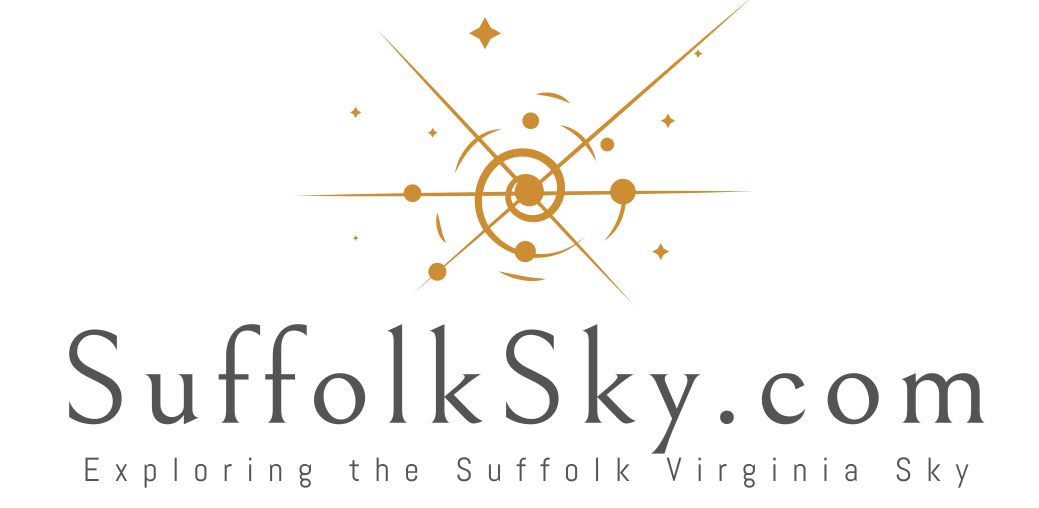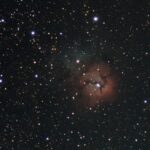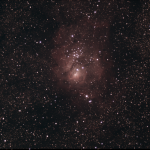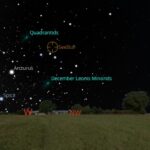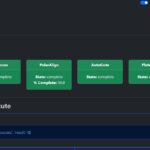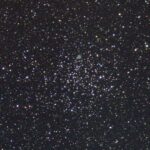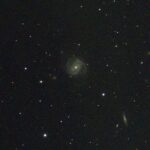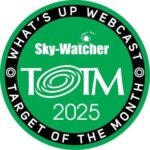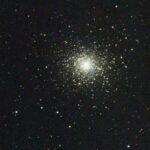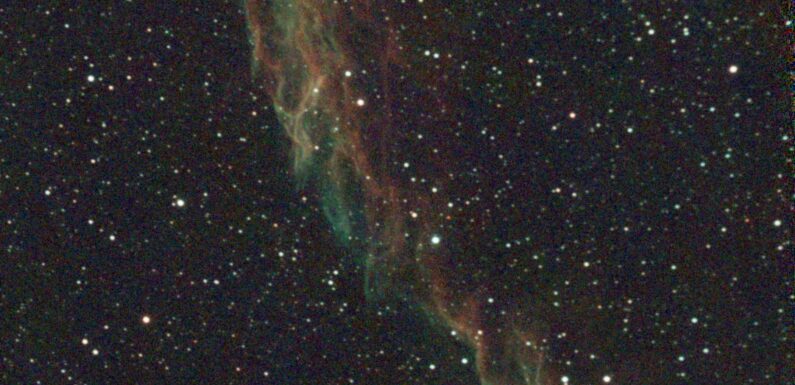
Finally a mostly clear sky! It has been a few months since the Southeastern VA sky has been without clouds or a bright Moon. Since I have been traveling a bit the main scope is still packed up, so I put the SeeStar S50 out in the driveway. Just after dark, was not really dark yet, I powered on the SeeStar S50, connected, leveled, and started observing. No plan for this session, it has been so long I really just wanted to look up. The session was great with views of a planetary nebula, a few open clusters, a couple of galaxies, a planet, and a supernova remnant. Was a nice night, have really missed tinkering with gear and capturing photons.
I titled this session incorrectly, it should be dated 09/19/2025. Guess that is what happens when you are a bit out of practice. The post was created on 9/20 but the session took place on 9/19/2025.
During the session I was broadcasting on the Night Skies Network. Had a great time chatting with Mark (Yowah, Australia) and George (Canada), learned a couple new trick on the SeeStar too. Check out Mark’s shots from his S30, some amazing captures there.
The images from this EAA session were captured using the SeeStar S50 in AltAz. Live stack integrations are from 2 to 20 minutes with no post processing or enhancements performed on the captured images outside of contrast, brightness, and saturation adjustments in the live stack. The images were saved just as observed on the iPad screen in the SeeStar app.
I started the night on M27, the Dumbbell Nebula, a planetary nebula in the constellation Vulpecula. It was not really good and dark yet but M27 popped into view after the first frame or 2. This is the final capture of 36 x 10 seconds using the SeeStar’s IRCUT filter.
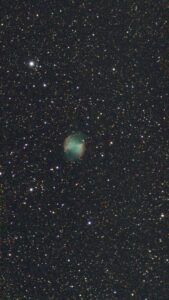
Next up was the M18, or the Black Swan Cluster, an open cluster in the constellation of Sagittarius. Little darker sky now, but the neighbors flood lights are brightening things up. This what we saw from 48 x 10 second exposures.
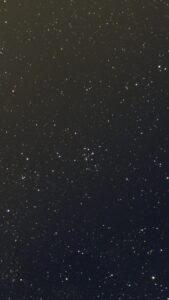
I get to add M18 to the SeeStar Messier Log.
For a bit of fun I move on to NGC 6992, the Eastern Veil Nebula, a supernova remnant in the constellation of Cygnus. WOW! It was visible immediately. More detail and color was apparent with each frame. The final 120 x 10 second exposures using the SeeStar’s light pollution filter.
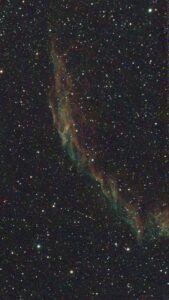
This was my favorite from the night. I tried to get some time on NGC 6960, the Western Veil, but it was very high in the sky and the SeeStar was dropping to many frames so I moved on.
Next up, M33, the Triangulum Galaxy, a spiral galaxy in the constellation of Triangulum. M33 was pretty low in the ENE, and there was a bit of haze and light in that direction. It took a few frames before you could even see anything there. Even after 92 x 10 seconds frames it is still very faint and there is not a tremendous amount of detail. It’s there but will probably be better once it rises a bit higher.
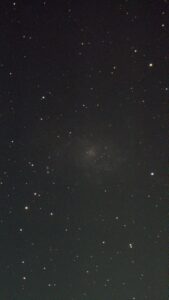
M33 gets to be added to the SeeStar 110 Messier Log as well.
After M33 I decided to try to capture Saturn. I took a quick video and stacked it in the SeeStar App. It is going to take some work, but I can see Saturn, the rings, and at least 3 of Saturn’s moons.
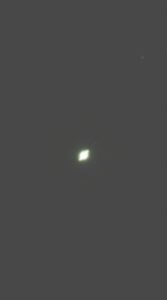
Now over to M31, the Andromeda Galaxy, a barred spiral galaxy in the constellation of Andromeda. Just because it was there, it’s big, and it’s bright. Started off look like a big bright mass but as the frames stacked in details in the dust lanes started to appear. This is the result of 120 x 10 second exposures.
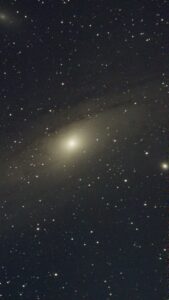
M31 is another one for my SeeStar Messier Log. M110 is almost out of frame up and to the left. M32 is almost out of frame to the right of Andromeda.
Now for one of my favorites NGC 457, the Owl Cluster, an open cluster in the constellation of Cassiopeia. Nice stars and a fair bit of color. Here are the results from 90 x 10 second exposures.
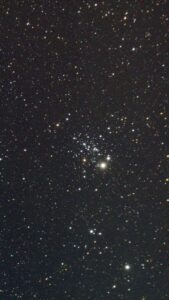
Then on to NGC 869 and NGC 884, the Double Cluster, a pair of open clusters in the constellation of Perseus. With a slight adjustment on the SeeStar’s sky map I was able to frame both of these clusters in the same field of view. Nice 75 x 10 second capture.
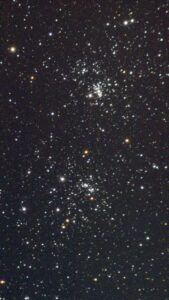
Finally to finish up the night, M34, an open cluster in the constellation of Perseus. Another one I get to add to my SeeStar Messier List. This is the result produced by 82 x 10 second exposures.
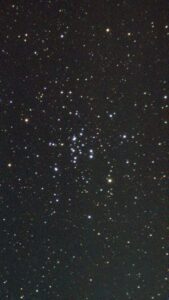
I closed the SeeStar arm and powered down right around midnight. Saw some cool stuff, talked to some cool folks, and added 4 more objects to my log. Great fun. Clear skies…
